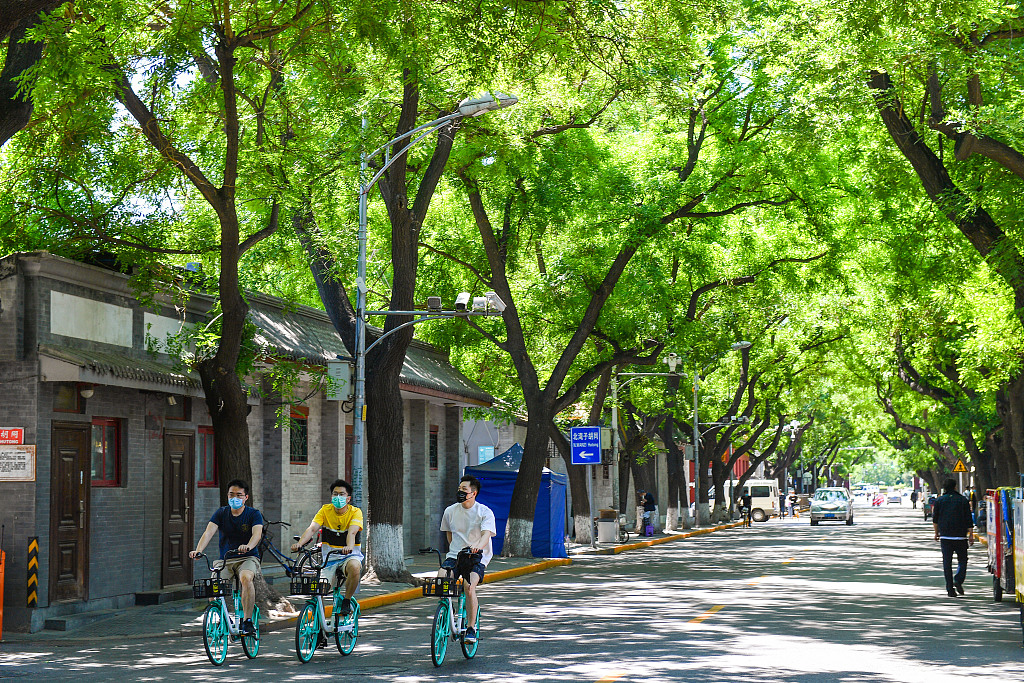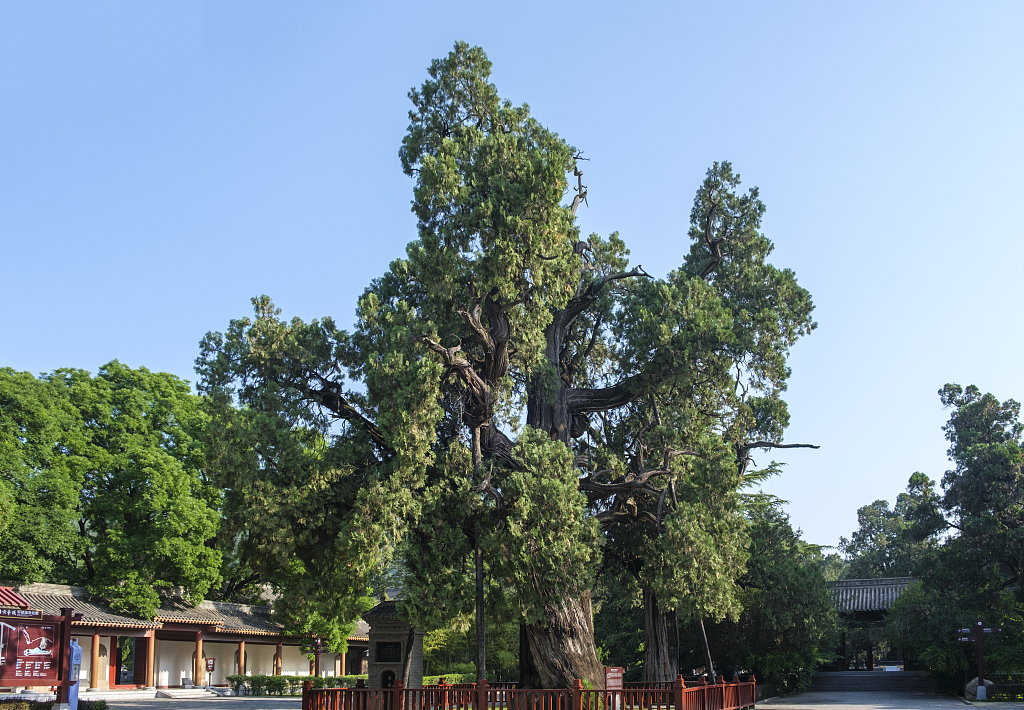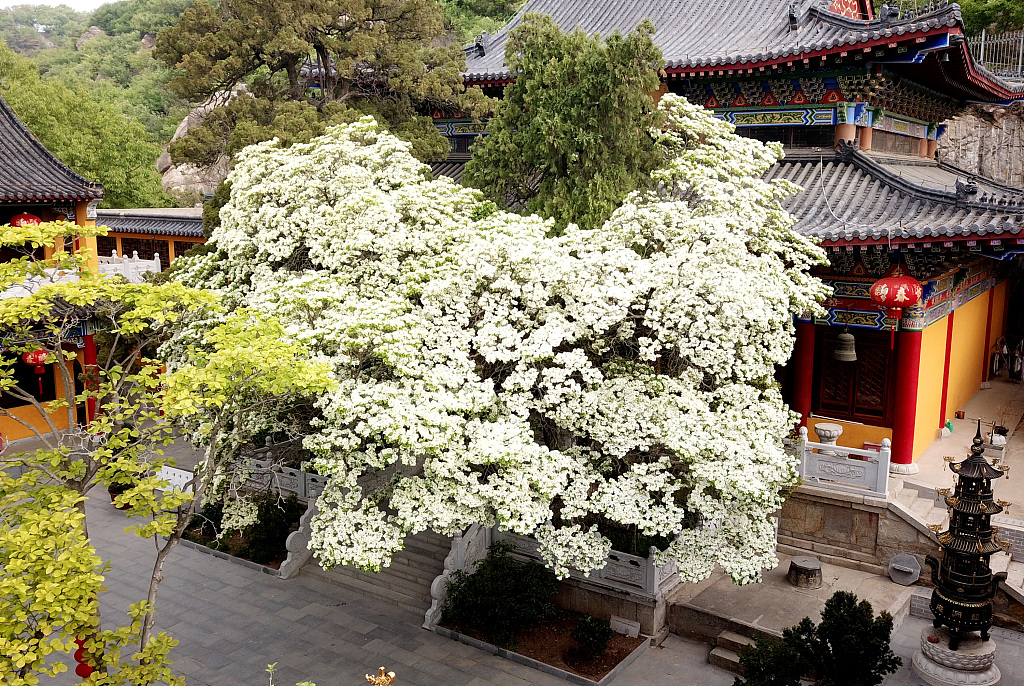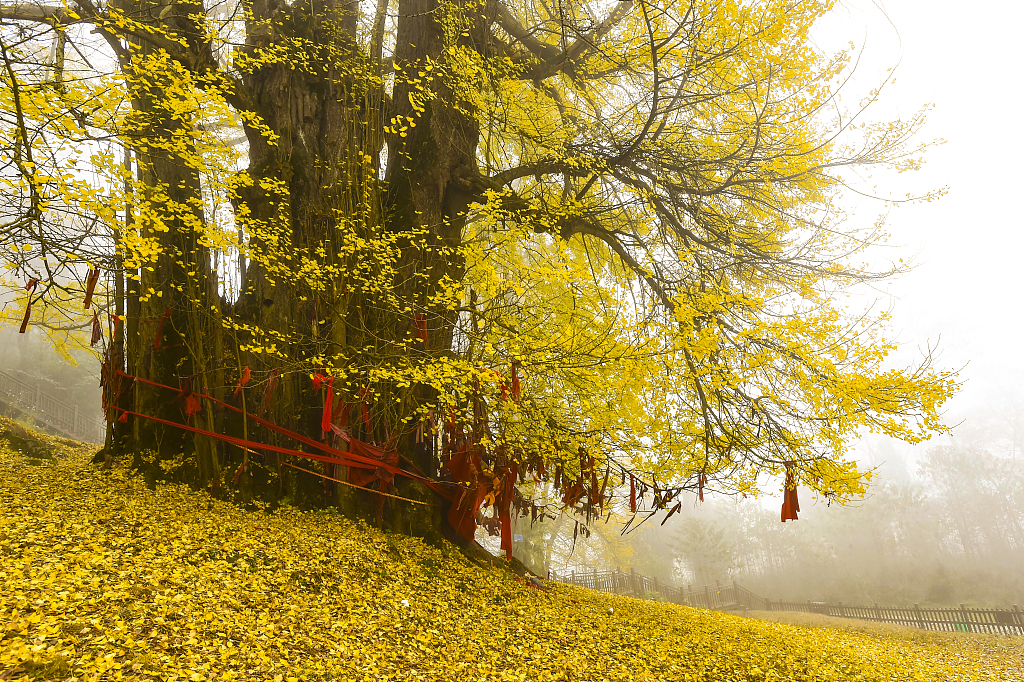March 12 marks China's National Tree Planting Day, which aims to promote nationwide afforestation and encourage people to plant trees.

Nanchizi Street beside Beijing's Palace Museum is shaded by Chinese scholar trees in summer. /CFP
Nanchizi Street beside Beijing's Palace Museum is shaded by Chinese scholar trees in summer. /CFP
By the end of 2020, China had some 220 million hectares of forest, according to the National Forestry and Grassland Administration. Trees are precious gifts from nature, and the ancient ones often hold historical value and have interesting stories attached to them.
China now has more than five million ancient trees (those aged over 100 years old) and treasurable trees (rare species and those with special historical or commemorative value), based on a census report released by the National Forestry and Grassland Administration.
Among them are five trees that have existed on Earth for more than five millennia, all of which are located in northwest China's Shaanxi Province. A cypress at the Xuan Yuan Temple, Huangling County is said to have been planted by Huangdi, or the Yellow Emperor, who is a legendary sovereign who helped to shape Chinese mythology, history and identity over 5,000 years ago.

A cypress tree at the Xuan Yuan Temple, Huangling County, Shaanxi Province is believed to have been planted by Huangdi, a legendary sovereign who helped shape Chinese history. /CFP
A cypress tree at the Xuan Yuan Temple, Huangling County, Shaanxi Province is believed to have been planted by Huangdi, a legendary sovereign who helped shape Chinese history. /CFP
Measuring 20 meters in height, the tree is still straight and sturdy, needing at least seven adults standing hand-in-hand to hug it in their arms. In 2012, seeds from the cypress fell into the soil and grew into three saplings, proving that this ancient tree is still vibrant and procreative.

An 835-year-old Chinese fringe tree at the Longdong Temple in Lianyungang City, Jiangsu Province blooms every April. /CFP
An 835-year-old Chinese fringe tree at the Longdong Temple in Lianyungang City, Jiangsu Province blooms every April. /CFP
Many ancient trees across China still keep blooming and bearing fruit each year. A month from now, an 835-year-old Chinese fringe tree in the Longdong Temple compound in Lianyungang City, Jiangsu Province is set to blossom. According to historical records, monks planted this 10-meter tall tree during the Southern Song Dynasty (1127-1279).
Since its petals are thin and white like glutinous rice and can be used as tea leaves when soaked in water, locals have also dubbed it the "glutinous rice tea tree." Blown by the wind, falling petals look like snowflakes, setting a tranquil and picturesque scene. They will be collected by monks and soaked in spring water, and the resulting glutinous rice tea will be offered free to visitors.

China's oldest gingko tree stands in Guangshun County, Guizhou Province. /CFP
China's oldest gingko tree stands in Guangshun County, Guizhou Province. /CFP
Gingko trees have long won Chinese people's appreciation for the unique shape of its foliage — which resembles a small folding fan. The country's oldest gingko tree has stood in Guangshun County, Guizhou Province for more than 4,760 years. Although located in a village far away from the downtown area, it attracts numerous visitors each November when its leaves turn gold.
To better protect these living fossils, local authorities have strengthened daily maintenance and treatment measures, set up ancient tree-themed parks and established an adoption system that allows the public to donate money to protect the trees.